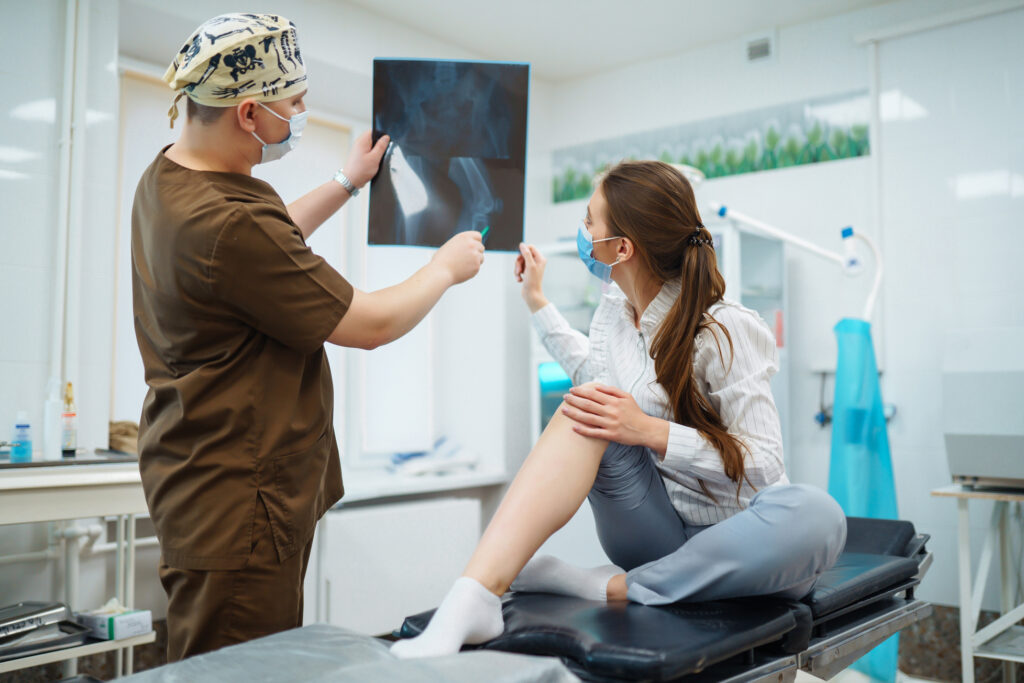What Is a Hairline Fracture? Causes, Symptoms, and Treatment Options

What Is a Hairline Fracture? Causes, Symptoms, and Treatment Options Facebook Twitter Youtube Instagram Not all injuries show themselves right away. Sometimes, even without swelling or bruising, a nagging pain lingers, especially after repetitive movements or a recent increase in physical activity. You might brush it off as a minor sprain or overuse. But when the pain doesn’t go away, it’s worth considering a deeper cause. In many cases, this kind of ongoing discomfort turns out to be something like a hairline fracture. In this blog, we will explain what hairline fractures are, what causes them, how to recognize the symptoms of a hairline fracture, and what treatments are available for a smooth recovery. What is a Hairline Fracture? Hairline fractures are usually caused due to repetitive trauma or overuse. A hairline fracture is an extremely small fracture that, at first, might not be seen on an X-ray, including in early stages. Hairline fractures are most typically seen in sports where there are multiple repetitions or impacts on particular areas of the body, such as basketball, running, gymnastics and dance. Risk Factors for Hairline Fractures Certain risk factors increase your risk of developing hairline fractures: Gender: Women are at an increased risk for hairline fractures, especially if they have irregular menstrual cycles. Anatomical Concerns: Flat feet, high arches, or poor-quality shoes may potentially add extra stress to bones. Bone Health: Certain disease states, like osteoporosis, ultimately lead to weakened bones and an increased risk of fractures. History of Fractures: If someone had one hairline fracture in the past, it raises their risk of having additional hairline fractures in the future. Nutrition: A lack of calcium or vitamin D compromises bone strength, raising fracture risk. What are the Causes of Hairline fractures? Multiple things can lead to hairline fractures, which are as follows: 1. Repetitive Activity Participating in a high-impact sport or repeatedly running can place excessive stress on the same bones over and over, and lead to microfracture injury. 2. Sudden Increase in Activity Regularly living your normal lifestyle and suddenly beginning an aggressive exercise plan raises the chances of a fracture. 3. Improper Footwear Using old or improper shoes (especially with high-impact exercise) can put too much stress on your foot and ankle bones. 4. Poor Nutrition Not receiving enough calcium, vitamin D or calories makes them more prone to fractures. 5. Underlying Conditions Osteoporosis or other conditions that deteriorate bone health can make bones more brittle, causing them to break with even the smallest amount of stress. What are Hairline Fracture Symptoms? Hairline fracture symptoms can be subtle at first and progress over time. They can often look like other soft tissue injuries that will require a diagnosis. Watch for: Localized pain that intensifies through activity and diminishes with rest. Swelling or tenderness in the area of the injury. Some bruising. Difficulty bearing weight or completing certain movements. In the ankle or foot, observe a limp or an inability to walk comfortably. In the wrist or hand, notice weakness while gripping or lifting an object. Common Hairline Fracture Areas and How to Identify Them 1. Hairline Fracture in Foot Often called the metatarsal bones (top of the foot). Seen frequently with runners and athletes. Symptoms: Pain on the top or side of the foot, especially while walking Treatment: Rest, supportive shoes, or a walking boot 2. Hairline Fracture Ankle The level of injury often depends on a sudden twist or repeated use. High-risk groups are runners and basketball players. Symptoms: Sharp pain around the ankle joint, swelling Treatment: elevate, ice, and partially immobilize with a boot or splint 3. Hairline Fracture Leg It will often involve the tibia (shin bone), especially for long-distance runners or repeated jumpers. Symptoms: dull pain, especially with pressure Treatment: strict rest, anti-inflammatory medication, sometimes cast. 4. Hairline Fracture Knee Usually rare, it occurs in the patella (kneecap) or femur (thigh bone). Symptoms: restrictions in bending the knee, stiffness, pain with bending and walking Treatment: consequential support and physical therapy post-rest period. 5. Hairline Fracture Wrist Caused by an acute fall or constant use (e.g. weightlifting or typing). Symptoms: Pain when using the wrist or applying pressure Treatment: Displaced or non-displaced wrist splint or cast, and activity modification. 6. Hairline Fracture Hand Most commonly seen in athletes or fall hacks, it will usually involve the metacarpal bones. Symptoms: Pain when gripping or making a fist Treatment: Immobilization using a splint or short cast Diagnosis: Do You Need an X-ray? Hairline fractures may be hard to detect on initial X-rays, especially in the first week after the injury. If a fracture is suspected but unconfirmed, physicians might recommend the following imaging with the understanding that for most bone injuries it will likely take time for swelling or changes that may suggest healing or otherwise to be indicated: MRI scan: best for soft tissues and identifying fractures early Bone scan: will show changes in bone metabolism CT scan: for complicated or deep fractures So, if you have continued pain and are wondering if it’s a sprain, don’t disregard it. Hairline Fracture Treatment Options Are you anxious that your bothersome discomfort could be more than a sprain? If you have been told that you have a hairline fracture, you may be wondering, “Do I need a cast? Will this heal by itself? When will I feel back to normal?” Fortunately, most hairline fractures resolve quickly and with appropriate care. However, understanding what to do and not to do while you are recovering can be key. Below are safe and effective ways to treat a hairline fracture. The treatment of a hairline fracture starts with R.I.C.E., which means Rest, Ice, Compression, and Elevation to help minimize swelling and prevent further damage. Depending upon the location of the fracture, our specialists/ doctors may use splints, walking boots, and braces to immobilize the area. If the fracture is in the foot, ankle, or leg, crutches may be necessary to help keep all weight off the bone. Pain management is

